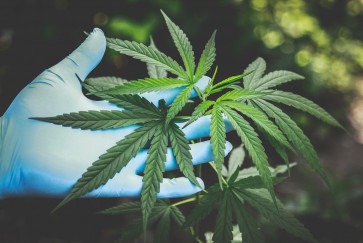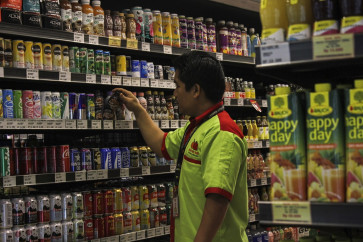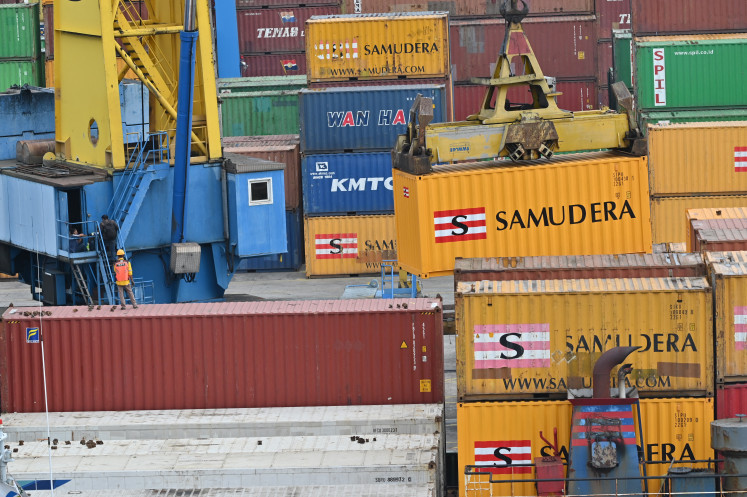Insight: Flying safe during COVID-19 is possible
Change text size
Gift Premium Articles
to Anyone

T
o soak in the sights, sounds and scents of distant lands. To close business deals. To be with family and loved ones during special moments. Or to be at the bedside as a last breath is taken. These are but some of the many reasons why we have taken a flight at some point in our lives.
But it has not been possible to do so in the last six months ever since governments closed their borders to prevent the spread of COVID-19.
We don’t know when COVID-19 will be eradicated. The development of an effective and globally recognized vaccine is an important step. But it will take time for it to be produced and distributed around the globe.
Until that happens, we need to live with COVID-19 while taking precautions. This applies to reopening borders and restoring aviation connectivity around the world. Doing so will help with economic recovery and preserve the 65.5 million jobs globally that depend on the aviation industry.
Even though some countries have since reopened their borders, albeit cautiously, many people are still not traveling. The fact is quarantine discourages travel. In a recent 11-market survey of travelers, 83 percent indicated that they will not travel if there is a chance of being quarantined at their destination.
We recognize governments have imposed quarantine measures to prevent the importation of COVID-19 into their countries. Even if borders are reopened, maintaining a 14-day quarantine has the same net effect of closing borders.
If the travel and tourism sector is to recover from the COVID-19 outbreak, an alternative to quarantine is needed. That is why the International Air Transport Association (IATA) has called for the systematic testing of all international travelers before departure.
Travelers say they are willing to accept testing. In the same survey, 84 percent agreed that testing should be required of all travelers, and 88 percent agreed that they are willing to undergo testing as part of the travel process.
We did not come to this decision lightly. The integration of systematic testing in the travel process will present logistical challenges and impact how people travel. We will need testing manufacturers to develop tests that can be deployed that are fast, accurate, scalable, affordable, and easy to use.
And considering the potential scale of testing required, nonmedical personnel will need to be able to operate it effectively. Governments and health authorities will also need to agree on common standards so that tests administered in the departure country are accepted on arrival.
Much still needs to be done to achieve 100 percent testing of all travelers prior to departure. We are working through the International Civil Aviation Organization (ICAO), which is leading efforts to develop and implement global standards for the safe operation of international air services amid the COVID-19 pandemic.
We recognize that air transport is not the only sector with a critical need for testing. The needs of medical personnel must be the first priority. We hope testing for air travel will be made a priority after medical needs have been met.
Aviation has a track record of pulling together to meet major challenges. We did it with security after 9/11, on the environment and on safety. It is a matter of time we will deliver an effective alternative to quarantine that will be accepted by governments and their health authorities.
I have spent almost 40 years in the airline industry, and a question I am often asked is whether it is safe to fly. No less than 1.2 billion people have travelled since the beginning of the year, with 44 cases reported where secondary transmission on board the flight potentially occurred. That’s one case for every 27 million travelers.
We recognize this may be an underestimate, but even if 90 percent of the cases were unreported, it would be one case for every 2.7 million travelers. The data is telling us that the risk of onboard transmission is very low when compared to other public indoor environments.
There are reasons why the risk is low. There are factors in the cabin that naturally limit the spread of droplets – everyone faces forward, the seat backs act as a barrier between rows, people generally don’t move around very much on a flight, and the air in the aircraft cabin circulates from the top to the bottom of the cabin (instead of along the length of the fuselage).
The quality of the air on board is also much better than most indoor environments. Cabin air in modern aircraft is 50 percent fresh air from outside the aircraft and 50 percent recirculated air, which goes through High Efficiency Particulate Air (HEPA) filters that are 99.993 percent effective in removing bacteria and viruses such as COVID-19.
Safety is the aviation industry’s number one priority. That includes biosafety. Following the COVID-19 outbreak, airlines have made changes to the travel experience to keep their passengers and crew safe.
If you board a flight today, you will be required to wear a face mask throughout the flight. Even the crew are doing so.
The inflight service has also been simplified. This is to reduce interaction between passengers and the crew. Congregation of passengers in the cabin is also reduced, for example, no queues to use the washrooms.
To minimize the risk of virus transmission through contact, airlines are performing deeper and more frequent cleaning to sanitize common areas. Common touch items, such as inflight magazines, have also been removed from the seat pockets.
This crisis has demonstrated how much is lost when the world cannot travel. Some have said that travel is forever changed or reduced. I don’t think so. For sure, business travelers will question their travel habits. And leisure travel will be impacted by economic uncertainty.
Although we are connecting through Zoom, Teams, Skype or other technologies, it is not the same as being there in person.
We will see measures that mean people can fly again, and not restricted to essential flights only, and when we do so, you can be assured that it will be done safely.
The writer is regional vice president for Asia Pacific, International Air Transport Association









